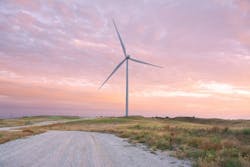$15B World Energy GH2 Project Secures Sites for Wind Power Generation from Canada
World Energy GH2’s $15 billion Nujio'qonik project on Newfoundland Island in Newfoundland and Labrador, Eastern Canada, has received approval to secure sites for wind power generation from the Canadian state government.
The approved land area covers nearly 1,078 km, roughly 1.8 times the size of Seoul (605.24 km).
Nujio'qonik is a large-scale green hydrogen commercialization project to produce green hydrogen without carbon emissions by splitting water through electricity generated from wind power. Later, the green hydrogen will be converted into green ammonia and transported to various continents, including Europe.
The project is expected to deliver a wind power generation capacity of about 4 GW, equivalent to the output of 3-4 nuclear power plants. The project has also acquired the Port of Stephenville for the production and intercontinental transportation of the green hydrogen and green ammonia in early 2023.
Under an investment agreement signed with World Energy GH2, the project’s first phase includes a 20% stake in SK Ecoplant to supply and install electrolyzers for green hydrogen production as well as front-end engineering design (FEED) for the plant facility. The preliminary step of pre-front-end engineering design (PRE-FEED) was completed at the end of August.
SK Ecoplant’s subsidiary, SK Ecoengineering, will be responsible for the EPC responsibilities of converting green hydrogen into green ammonia.
The project’s initial stage will generate 1GW of onshore wind power for electricity production and 600 MW of electrolyzers, including a combination of both solid oxide electrolysis cells (SOEC) and polymer electrolyte membrane electrolysis cells, for green hydrogen production.
The project is anticipated to produce about 180,000 tons of green hydrogen and 1.08 million tons of green ammonia annually, once completely operational by 2025 and 2026, respectively.
Bloom Energy will supply SOEC, which operates with high-temperature water vapor reaching up to 850°C to reduce the electrical energy required for hydrogen extraction and thus, enhancing hydrogen production efficiency. A 500-hour operational demonstration conducted by the Idaho National Laboratory under the U.S. Department of Energy produced 1 kg of hydrogen with 37.7 kWh of power.
Recently, NASA's Ames Research Center demonstrated the SOEC facility, boasting a 4 MW scale and producing 1 kg of hydrogen with 37.5 kWh of power.
World Energy GH2 has also submitted environmental impact statement documents, which are awaiting approval from the Newfoundland state government.
“As a leading contributor to the commercialization of green hydrogen by 2025, we are resolute in ensuring the smooth progress of the Nujio'qonik project,” Kyung-il Park, CEO of SK Ecoplant said.
Canada aims to encourage job creation and improve the local economy by supporting wind power and green hydrogen projects on Newfoundland Island.
